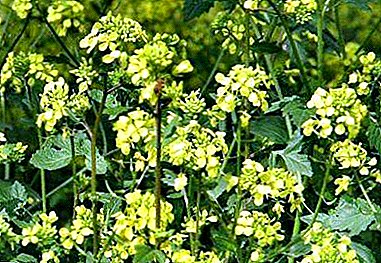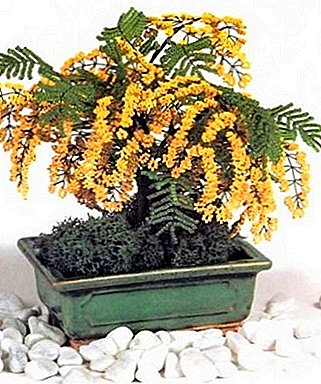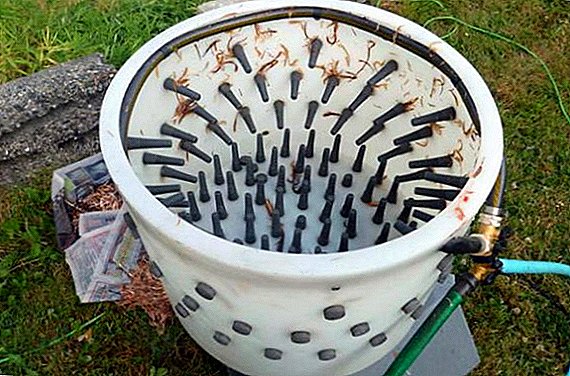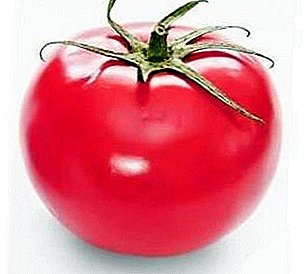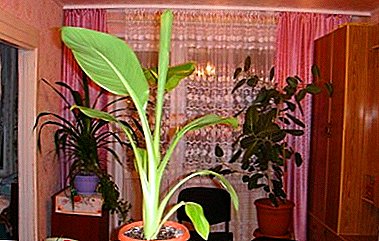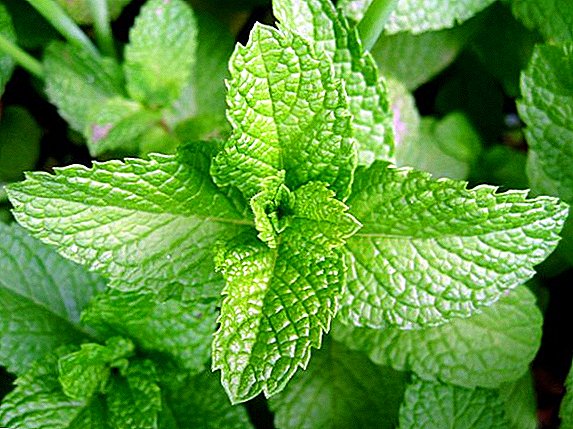 Mint - a medicinal plant known for its tonic, anti-inflammatory, healing, soothing, anti-stress and concentration-promoting properties. It is used both in traditional medicine, and in traditional. It is also used in the food industry, cosmetology, perfumery and just for gardening garden and park areas. The plant is completely unpretentious, grows in almost any condition and does not require special care, and the benefits of mint are great for the body. Proper use of different types of mint gives excellent results in the recovery and treatment of the body, improves immunity, activity and well-being.
Mint - a medicinal plant known for its tonic, anti-inflammatory, healing, soothing, anti-stress and concentration-promoting properties. It is used both in traditional medicine, and in traditional. It is also used in the food industry, cosmetology, perfumery and just for gardening garden and park areas. The plant is completely unpretentious, grows in almost any condition and does not require special care, and the benefits of mint are great for the body. Proper use of different types of mint gives excellent results in the recovery and treatment of the body, improves immunity, activity and well-being.
Did you know? There is a version that the mint received its name by the name of Minty from the ancient Greek myths, which the goddess Persephone turned into grass, thus avenging the love of her husband Aida for a beautiful girl.
Talk about how useful each mint species for the body.
Useful properties and contraindications of lemon mint
 Lemon mint is also called melissa, but, in fact, melissa is not mint. This is an independent plant, the second name of which simply stuck to the people. And it got accustomed because Melissa looks like mint, but it exudes a steady lemon scent, but mint is menthol. The plant is useful, although it contains less essential oils than mint. It has a sedative, antispasmodic, analgesic, diaphoretic effect. Normalizes sleep, relieves overwork and depressive states, evens out reduced pressure.
Lemon mint is also called melissa, but, in fact, melissa is not mint. This is an independent plant, the second name of which simply stuck to the people. And it got accustomed because Melissa looks like mint, but it exudes a steady lemon scent, but mint is menthol. The plant is useful, although it contains less essential oils than mint. It has a sedative, antispasmodic, analgesic, diaphoretic effect. Normalizes sleep, relieves overwork and depressive states, evens out reduced pressure.
It is prescribed for certain cardiac, respiratory, gastrointestinal diseases, diseases of the nervous and female reproductive system, metabolic disorders. It is indicated for anemia, arrhythmia, headache, neuralgia, asthma, with poor appetite, constipation. Externally used in the form of washes, lotions, compresses - for bruises, skin wounds, insect bites, polyarthritis. The form of application is tea, decoction, tincture.
Important! Lemon mint (melissa) exhibits its medicinal properties in the treatment of menstrual disorders, inflammation of the ovaries, hormonal disorders, but it also has contraindications for women - pregnancy.
It is carefully applied with persistently reduced pressure - preferably under the supervision of a physician. Lemon balm is also contraindicated in case of individual intolerance, liver failure, epilepsy, ulcer, to children up to 3 years. Lemon mint, despite its medicinal properties, has contraindications for men. It has a negative effect on fertility, men under 50 years old do not need to get involved in taking lemon mint inside. Externally, you can use without fear.
The useful peppermint
 Peppermint has the widest range of applications for the prevention and treatment of various systems and organs. She is appointed to improve appetite, digestion, intestinal motility, relieves colic and stomach cramps. It has a good laxative effect, helps with flatulence. Peppermint tea is considered one of the most effective diuretics and choleretic drugs. Peppermint essential oils are applied externally with massage to relieve muscle pain and tension.
Peppermint has the widest range of applications for the prevention and treatment of various systems and organs. She is appointed to improve appetite, digestion, intestinal motility, relieves colic and stomach cramps. It has a good laxative effect, helps with flatulence. Peppermint tea is considered one of the most effective diuretics and choleretic drugs. Peppermint essential oils are applied externally with massage to relieve muscle pain and tension.
The same relaxing and analgesic effect is achieved if you take a bath with a few drops of mint oil. Due to the high content of menthol mint is good for the heart - it has a vasodilating effect, which is necessary in the treatment of angina and high blood pressure. It is also used for colds, bronchitis, and pneumonia. Mint has strong antiseptic properties - treatment of wounds, skin rashes, acne, dandruff broth and tinctures of mint is very effective. Mint calms, helps to cope with stress, depression, large emotional and mental stress.
Important! Peppermint consumption should be moderate for people driving a vehicle, or those whose work is related to concentration. Mint can cause increased sleepiness!
The benefits of curly mint
 Synonyms of curly mint - mint, spring mint, curly, German, kolosovidnaya, garden. In general, curled mint is used in pharmacology and traditional medicine less frequently than peppermint. This is due to its milder effect and a lower content of essential oils, and instead of menthol it contains carvone. Herb mint curly shows its beneficial healing properties in a little bit less, but it is widely used in cooking and as a flavoring agent in many types of industry. Due to the mild effect on the body, its use is permitted for children. Forms of preparation are the same as in other types of mint - teas, tinctures, decoctions.
Synonyms of curly mint - mint, spring mint, curly, German, kolosovidnaya, garden. In general, curled mint is used in pharmacology and traditional medicine less frequently than peppermint. This is due to its milder effect and a lower content of essential oils, and instead of menthol it contains carvone. Herb mint curly shows its beneficial healing properties in a little bit less, but it is widely used in cooking and as a flavoring agent in many types of industry. Due to the mild effect on the body, its use is permitted for children. Forms of preparation are the same as in other types of mint - teas, tinctures, decoctions.
Important! Can mint be harmful to women with something else? Yes, with increased levels of testosterone hormone in women and with frequent use of mint body hair and fullness can be observed.
Medicinal properties of long leaf mint
 Longfoot mint is used as an expectorant, diaphoretic, febrifuge, antiseptic, sedative, painkiller and tonic. It is also used to improve digestion, increase appetite, relieve gastric, intestinal colic and toothache. Tinctures and decoctions process wounds, used for rinsing with stomatitis, pharyngitis, sore throat, otitis. In case of skin rash, dermatitis, baths with long leaf mint are shown. In addition, it is used as a spice for cooking and drinks and as an aromatic component in cosmetology, perfumery.
Longfoot mint is used as an expectorant, diaphoretic, febrifuge, antiseptic, sedative, painkiller and tonic. It is also used to improve digestion, increase appetite, relieve gastric, intestinal colic and toothache. Tinctures and decoctions process wounds, used for rinsing with stomatitis, pharyngitis, sore throat, otitis. In case of skin rash, dermatitis, baths with long leaf mint are shown. In addition, it is used as a spice for cooking and drinks and as an aromatic component in cosmetology, perfumery.
Did you know? The ancient Russian name of mint is dragolyub, perekop, bezhava. Our ancestors used mint, the usefulness of which from the beginning was known in the treatment of heart disease, sleep disorders, as a tonic and aromatic agent.
Useful and harmful properties of field mint
 Synonyms - meadow mint, forest, wild, upland, dog, oregano, perekop, flea mint, motherboard. This type of peppermint is of the greatest importance for medicine and is used to make a well-known heart drug, Validol. Field mint is good for the heart - it has a vasodilating effect and relieves spasms of the heart muscle. Tea and decoctions are used for pathologies of the gastrointestinal tract - stomatitis, poor appetite, high acidity of gastric juice, to improve secretion and digestion, with flatulence and bowel spasms. They are also prescribed for dyspepsia, gastritis, diarrhea, atony, and gastric colic. Acts as a choleretic, prevents the formation of stones and gallstone disease.
Synonyms - meadow mint, forest, wild, upland, dog, oregano, perekop, flea mint, motherboard. This type of peppermint is of the greatest importance for medicine and is used to make a well-known heart drug, Validol. Field mint is good for the heart - it has a vasodilating effect and relieves spasms of the heart muscle. Tea and decoctions are used for pathologies of the gastrointestinal tract - stomatitis, poor appetite, high acidity of gastric juice, to improve secretion and digestion, with flatulence and bowel spasms. They are also prescribed for dyspepsia, gastritis, diarrhea, atony, and gastric colic. Acts as a choleretic, prevents the formation of stones and gallstone disease.
A proven remedy for pulmonary colds - decoction of mint, the use of which consists in mucolytic, expectorant, antipyretic action. It is prescribed for laryngitis, bronchitis, whooping cough, pneumonia, pulmonary tuberculosis, asphyxiation. Mint infusions are externally used as an antimicrobial, healing, blood circulation enhancing, pain relieving and inflammation remedy for convulsions, rheumatism, radiculitis, arthritis, skin wounds, rashes and itching, dermatitis.
Important! Mint of any kind exhibits its beneficial properties and benefits regardless of gender, but its frequent use has contraindications for men - mint reduces potency. This is due to the increased content in the mint of female plant hormones - phytoestrogens, which can reduce the amount of the male hormone in the body - testosterone. Men should not completely refuse mint, but it should be used sparingly in the form of tea and decoction. Two or three cups a day will not hurt, but more than five cups of mint - brute force.
On the other hand, to use mint tea, not too strong tea or fresh mint juice for men in certain courses or daily, with short breaks, is even useful for potency. Mint perfectly soothes, relaxes, relieves fatigue, prevents stress and fights sexual impotence associated with it.
How helpful dog mint
 Canine mint, or budra, ivy-shaped, dushmyanka, garachka, rams, molehill, forty-man is a useful healing herb. What helps dog mint? It is used for diseases of the respiratory, urinary, digestive systems. It has choleretic, antiseptic, healing, diaphoretic, analgesic, anti-tumor, anti-inflammatory properties. It is prescribed for skin diseases and wounds, scrofula, stomatitis, anemia, loss of appetite, gastritis, dyspepsia, enteritis, colitis. And also for the treatment of eye diseases - tearing, conjunctivitis, catarrhal diseases of the nose, throat and bronchi, asthma, cystitis, gallstone and urolithiasis. External - for fractures, inflammations, dislocations of bones and joints, acne, burns, eczema, psoriasis. Budra is used in cooking as a flavoring and ingredient to create tonic beverages.
Canine mint, or budra, ivy-shaped, dushmyanka, garachka, rams, molehill, forty-man is a useful healing herb. What helps dog mint? It is used for diseases of the respiratory, urinary, digestive systems. It has choleretic, antiseptic, healing, diaphoretic, analgesic, anti-tumor, anti-inflammatory properties. It is prescribed for skin diseases and wounds, scrofula, stomatitis, anemia, loss of appetite, gastritis, dyspepsia, enteritis, colitis. And also for the treatment of eye diseases - tearing, conjunctivitis, catarrhal diseases of the nose, throat and bronchi, asthma, cystitis, gallstone and urolithiasis. External - for fractures, inflammations, dislocations of bones and joints, acne, burns, eczema, psoriasis. Budra is used in cooking as a flavoring and ingredient to create tonic beverages.
Useful properties and contraindications of catnip
Catnip mint, lemon, or catnip are so named because of the great sensitivity to their smell of cats, in which the grass causes overexcitement.
Did you know? Only adult cats react to catnip - sexually mature, kittens up to 6-7 months old are not sensitive to it. But even among adult animals there are individuals who are not susceptible to catnip.

This type of mint does not have a similar effect on a person, but is used as a therapeutic and prophylactic agent. It is prescribed for nervousness, insomnia, headaches and migraines, anorexia, diarrhea, stomach and intestinal colic.
How useful room mint
The second name of mint room - plektranthus. This is a decorative room view of mint, diluted in pots in houses and apartments. Curative effect, such as peppermint or field, does not have. It is used as a sedative of mild action with agitation, fatigue - brewed in a cup with boiling water. For the treatment of childhood enuresis, the infusion is added to bathing water. In other cases, mint room diluted rather as an aromatic additive to tea, compote or baking, meat, and simply as a houseplant. It will be useful in the house as a means against mosquitoes, moths, flies, midges - these insects are deterred by its smell.  To grow, collect and properly store mint is not difficult. You can buy a ready-made pharmacy fee. Peppermint in many cases is a great alternative to medication treatment. In addition, it is very pleasant to the taste, so tea with her, especially in autumn and winter, is a pleasure!
To grow, collect and properly store mint is not difficult. You can buy a ready-made pharmacy fee. Peppermint in many cases is a great alternative to medication treatment. In addition, it is very pleasant to the taste, so tea with her, especially in autumn and winter, is a pleasure!


